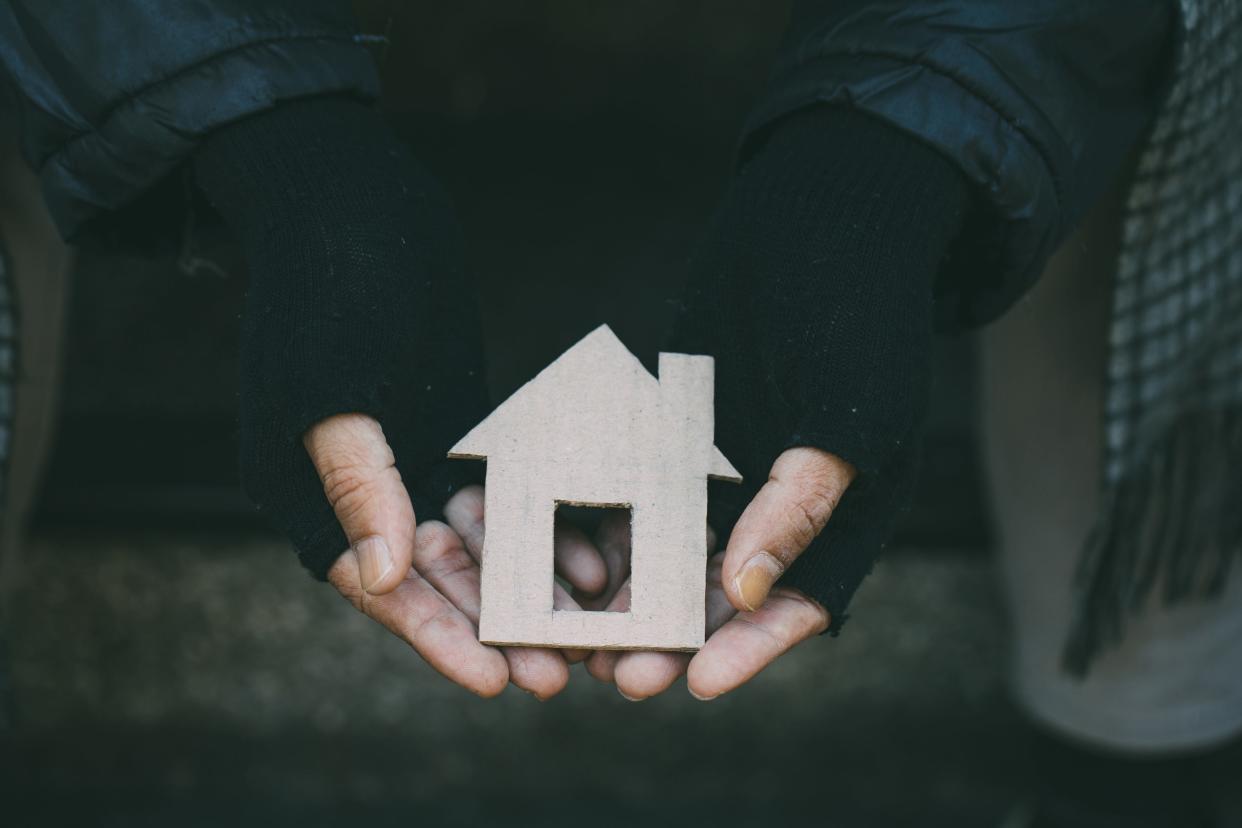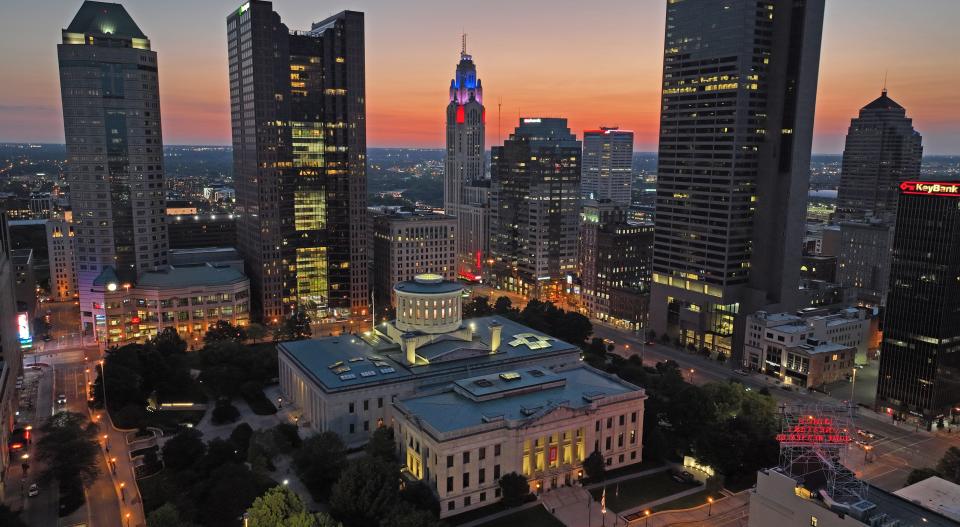Why are so many homeless in Columbus and what can be done? A chat with Shannon Isom

Amelia Robinson is the Columbus Dispatch's opinion and community engagement editor.
Columbus' economy is hands down the strongest in Ohio.
Still far too many struggle to afford shelter in a city where the average rent for a two-bedroom apartment jumped from $831 in 2016 to $1,295 in 2022, according to data from the United Way of Central Ohio.
Homelessness in the Columbus area is up more than 20% compared to a year ago, according to the annual count done by the Community Shelter Board, an organization tasked with leading the Columbus area's response to homelessness.
Our view: Columbus' housing market not cutting it. We must all open our eyes to crisis
There were 2,337 people designated as unhoused during a Jan. 25 "point-in-time" count. There were 1,912 unhoused people on that date a year before.

During the latest episode of the Then What Happened podcast, Shannon Isom, the new president and CEO of the Community Shelter Board, told me the challenges facing families here are great, but there are many at the table who believe in the injustice of homelessness and the need for affordable housing resources.
More: Amid annual count, much is planned this year in Columbus to help the homeless find housing
"You're sitting at tables with people, and a community, and a representation of spirit and heart that really wants to solve this," she said. "We don't have a lot of tables where everybody is on the same page with the intent of that. That's really special here."
Isom and I discussed homelessness in central Ohio during the show and her early impressions as she and her team embark on the journey to implement effective strategies to end homelessness here.
Listen to the episode on Dispatch.com, Spotify, Apple podcasts or whatever else you find your favorite program.
Excerpts from our conversation edited slightly for clarity.

AMELIA: What does homelessness actually "look" like in Columbus? People conjure up ideas of what it is like to be homeless.
SHANNON: What I really appreciate your question for is that it allows me to also describe what homelessness looks like that isn't on the streets. That's where we go (in our minds) immediately.
Going there also allows us to devalue the human being that's experiencing it (homelessness).
Ginther: Columbus area communities must stop adding jobs without allowing new homes, people
Opinion: We foot bill to keep Columbus' poorest families trapped and dodging bullets daily
So, what do I say homelessness looks like? Homelessness looks like intimate partner violence — and your housing now becomes no longer a home of safety.
Homelessness looks like children who are not only in shelters, but are also couch surfing, also staying with friends, maybe also being kicked out at 18 from their home.
Homelessness looks like moving through a very bad point in your life that has soaked up all your resources. That could look like a divorce. That could look like a death in the family.
That could also look like — and I know many people are going through this — a devastating health crisis in the family. Whether it's you or someone else, your child or your parents.
And those resources, not only when it comes to the stability of your house, start not only dwindling, but maybe gets to a point where you're going to have to start making some different choices about those housing resources.
It could look like a change in job, and it could look like a major move.
Homelessness and the destabilization of housing happens to many, many families.
When we visually see homelessness on the street, there's been such a slide of destabilization. That arc of homelessness — when it began to where we see it — began many, many, many factors, issues, blunt forces to someone's life and stabilization way upstream.
So, I appreciate the question again because one of the things that I would like to speak to when it comes to homelessness (is that) all of us understand a time in our lives when there have been resources that have been vulnerable.
All of us understand not having a safety net at times or having something that has happened to us in our life that is devastating or embarrassing or tough to talk about and tell others.

All of us understand that.
(We also know that) the higher levels of economic strength and development, the less affordable housing you will have period.
There's no other way around it.
Our city is moving through a boom of high development and economic growth. That has a direct correlation with decreased affordable housing.
AMELIA: If everyone is on the same page when it comes to finding solutions to homelessness, why aren't we there?
SHANNON: Midwestern cities have not — probably for even some decades — had a lot of experience with economic growth.
Maybe we're excited about this level of energy it takes to support this economic growth, population growth, education growth — and look up and say, "Oh my goodness, what are some of the unintended consequences to this growth."
All of us are kind of flat footed in being excited around the growth and then maybe a little unprepared from a system perspective on this unintended consequence. That's one thing...
The second is that maybe, some of the exacerbation of the unintended consequences of homelessness, of a lack of affordable housing, a lack of housing variation itself within the community has been exacerbated by this pandemic — this major global crisis that we're all coming off of.
So again, the first is because it is unintended. The second is because it is unintended.
We just haven't been in this space before. Here we have this pandemic that has exacerbated a whole host of traumas that were already part of the community. And I think that when you look across all industry — education, K through 12; when you look at nonprofit and philanthropic industries; when you look at private businesses — we're all grappling with oh my goodness, how do we come back to whatever that normal is and the normal has been adjusted.
It has exacerbated an already existing crisis in trauma within our community that now has been amplified and potentially has exploded to a level of critical mass that feels burdensome to us today.
And maybe the third reason is that we really don't have the systems for it yet— to really, really crack and cure homelessness.
And maybe the fourth is all of those things together.
As we look across the country, I don't think any of us have a city that says, "oh gosh, this is the marker" or a city that says "they're doing it in best practice" or a city that says, "oh, gosh, they've solved it."
So just like many of our (peer cities), we haven't landed on the crafting of the tools to solve this...
My last answer to this. Shane Phillips, who we brought in — who is an expert speaker, expert thought leader in affordable housing — said cities would be excited to have the problem that Columbus has.
Opinion: Columbus' shame: High cost of housing pushes low income residents out
That we have so much. So much resource. We have so many great minds — acumen in people — dedicated to this.
It's just now a matter of how.
Not do we have enough. Not do we have what it takes. Not do we have the right people at the table.It's just how.
Amelia Robinson is the Columbus Dispatch's opinion and community engagement editor. @1AmeliaRobinson
This article originally appeared on The Columbus Dispatch: Shannon Isom of Community Shelter Board discusses homelessness in Columbus

